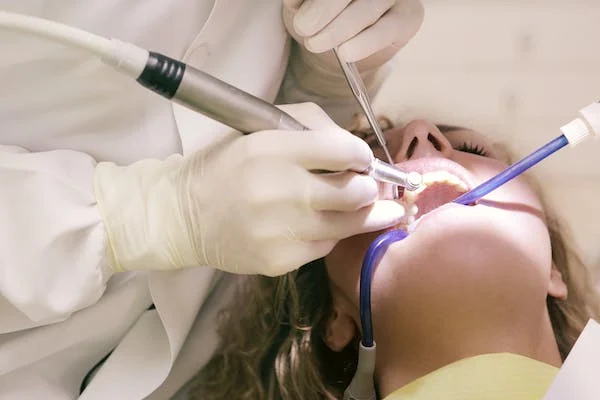A Houston, TX dental practice has undergone a significant transformation in recent years, thanks to the integration of modern technology. From digital radiography to 3D printing, these advancements have improved patient care, enhanced treatment outcomes, and streamlined clinical workflows. In this article, we will explore the latest technological innovations in dentistry and their impact on the field.
What are the latest technological innovations in dentistry?
Here is a detailed description of the latest technological innovations in dentistry for improved oral health and patient comfort:
Digital Radiography
Digital radiography has replaced traditional film-based X-rays, offering higher image quality, reduced radiation exposure, and instant results. This technology enables dentists to diagnose and treat conditions more accurately and efficiently.
Cone Beam Computed Tomography (CBCT)
Cone Beam Computed Tomography (CBCT) is a revolutionary imaging technology in dentistry, providing high-resolution 3D images of teeth, bones, and soft tissues. CBCT scans offer unparalleled accuracy and detail, enabling dentists to diagnose and treat complex cases with confidence. With its ability to capture the entire oral anatomy in a single scan, CBCT facilitates precise planning and execution of procedures such as implant placement, orthodontic treatment, and oral surgery.
Intraoral Scanners
Intraoral scanners create accurate digital impressions, eliminating the need for traditional impression materials. This technology streamlines the restorative process, reduces patient discomfort, and improves treatment accuracy.
3D Printing
3D printing technology fabricates dental models, surgical guides, and prosthetic devices with precision and speed. This innovation enables dentists to create customized solutions for patients, enhancing treatment outcomes and patient satisfaction.
CAD/CAM Systems
Computer-aided design and computer-aided manufacturing (CAD/CAM) systems design and fabricate dental restorations, such as crowns and bridges, with unparalleled accuracy and efficiency.
Laser Technology

Dental lasers perform various procedures, including cavity removal, gum recontouring, and teeth whitening. This technology minimizes pain, reduces recovery time, and enhances patient comfort.
Electronic Health Records (EHRs)
EHRs streamline patient data management, simplify communication, and improve treatment planning. This technology enables dentists to access patient information securely and efficiently.
Tele dentistry
Teledentistry enables remote consultations, expanding access to dental care, especially for underserved populations. This technology improves patient engagement, reduces wait times, and enhances overall care.
Digital Dentures and Removable Prosthetics
Digital dentures and removable prosthetics represent a significant advancement in restorative dentistry. Utilizing CAD/CAM technology and 3D printing, dentists can design and fabricate customized dentures and prosthetics with unparalleled accuracy and precision. This digital approach streamlines the production process, reducing the need for manual impressions and multiple adjustments. The result is a more comfortable, natural-looking, and durable final product that enhances patient satisfaction and improves oral function.
Dental Materials and Nanotechnology
The integration of nanotechnology in dental materials has led to the development of innovative solutions that enhance oral healthcare. Nanoparticles and nanocomposites are being used to create stronger, more durable, and antimicrobial restorative materials, such as fillings, crowns, and implants. These advanced materials exhibit improved mechanical properties, reduced toxicity, and enhanced biocompatibility, leading to better treatment outcomes and patient satisfaction.
What is the impact of modern technology on dentistry?
The impact of modern technology in dentistry is significant, leading to:
- Improved accuracy and precision in diagnoses and treatments
- Enhanced patient comfort and reduced anxiety
- Increased efficiency and reduced treatment time
- Better patient outcomes and longer-lasting results
- Streamlined clinical workflows and improved practice management
- Enhanced patient engagement and education
- Increased accessibility and expanded reach of dental care
- Reduced radiation exposure and improved safety
- Improved communication and collaboration among dental professionals
- Continuous learning and professional development opportunities
- Personalized and customized treatment options
- Reduced costs and improved cost-effectiveness
- Improved data management and analytics
- Enhanced patient satisfaction and loyalty
Modern technology has revolutionized dentistry, transforming patient care, treatment outcomes, and clinical workflows. As technology continues to evolve, the future of dentistry holds much promise, with even more exciting developments on the horizon.




